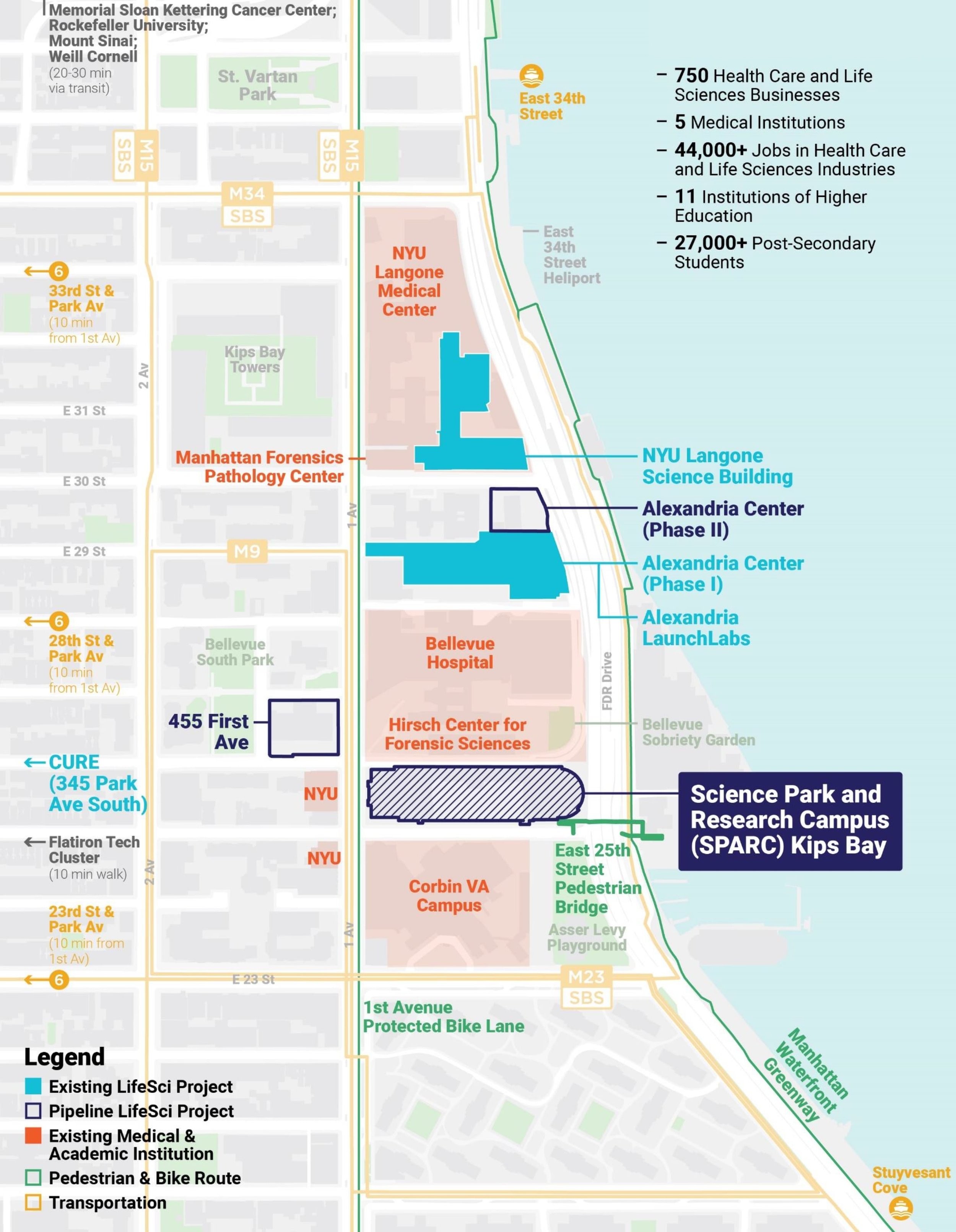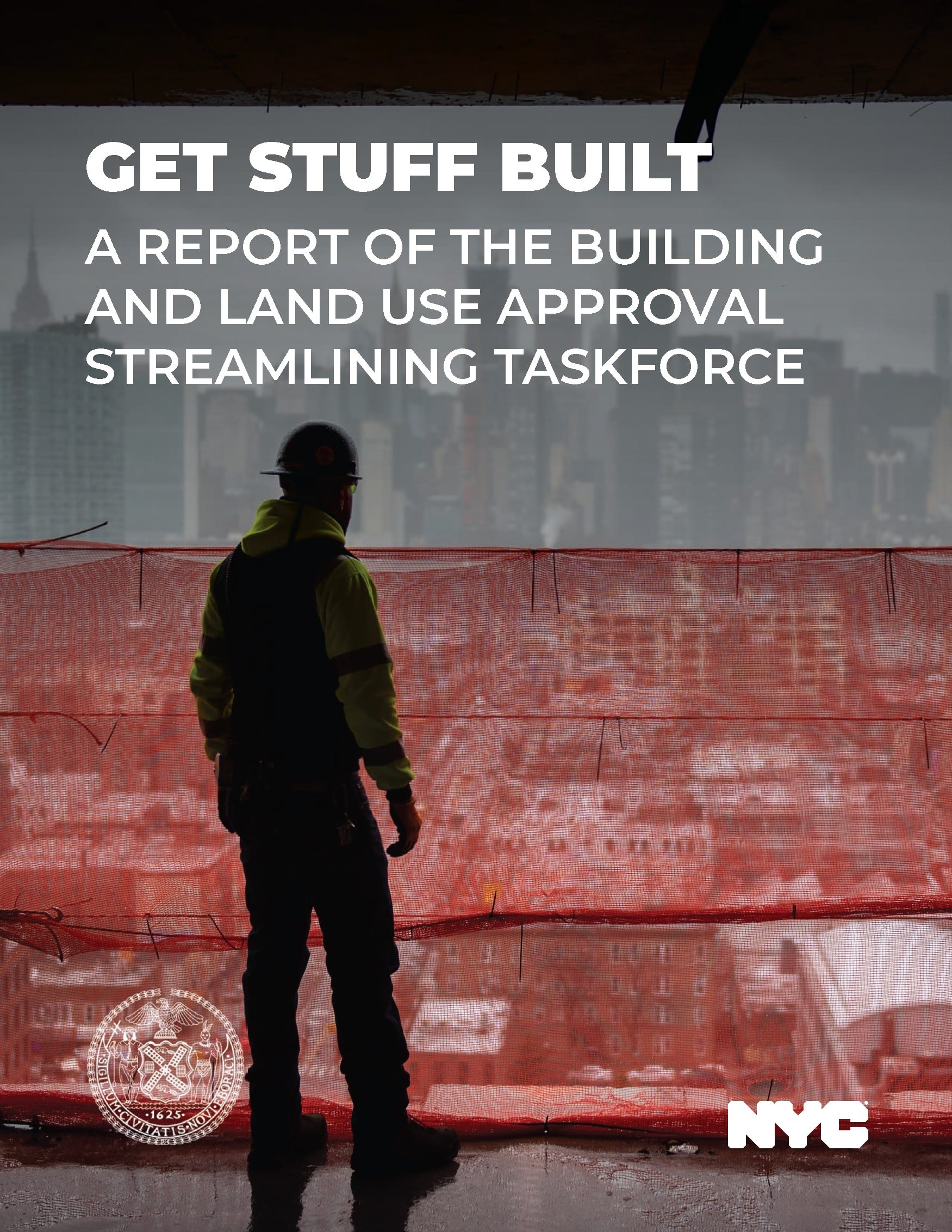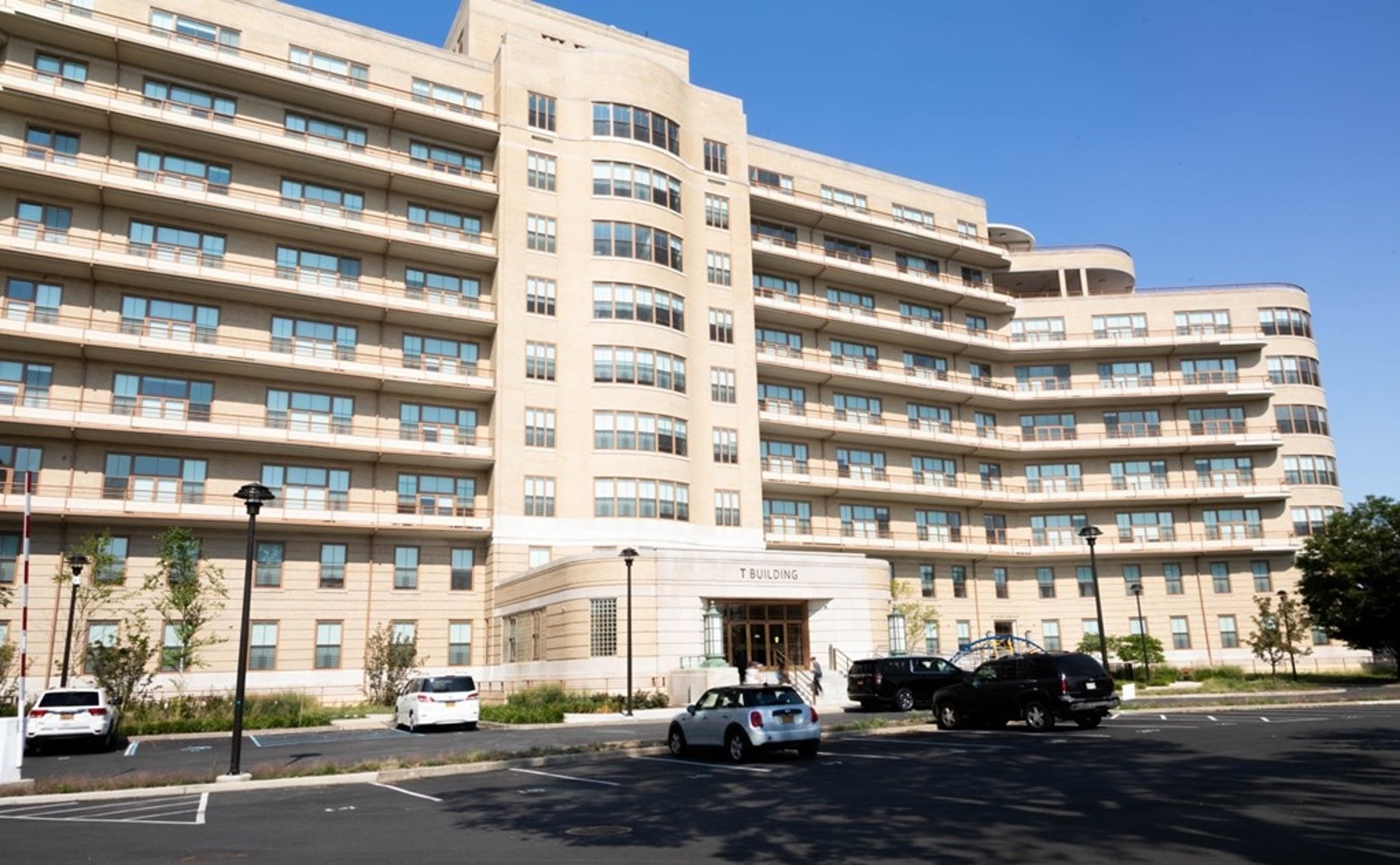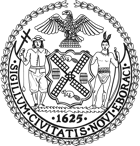Investment Priorities
1. Maintain and modernize our infrastructure and facilities
2. Strengthen public health and safety
3. Support economic growth and preserve affordability
4. Broaden access to education and cultural resources
Investment Priority 3:
Support economic growth and preserve affordability
We will tailor capital investments toward making New York City’s economy more equitable and accessible to all. This includes making investments that focus on increasing affordable housing, including in low-affordability areas, and unlocking economic choice for low-income residents, to ensure that all New Yorkers have economic stability and housing mobility.
Training New Yorkers for economically resilient and climate-responsive jobs
Over the next 10 years, we are making strategic investments to help prepare and connect New Yorkers to jobs in every sector of the City’s economy. We will continue to invest in workforce centers in each of the five boroughs through new construction and improvements.
Standalone institutions will train New Yorkers for recession- proof, climate-responsive jobs. On Governors Island, the Center for Climate Solutions will position New York City as a global leader in the development of just solutions to the climate crisis: researching and modeling equitable urban climate solutions, driving the growth of accessible green jobs, and furthering public awareness and action. At full build, the Center for Climate Solutions will be home to 7,000 jobs and will serve as a national model for growing green- and blue-tech sectors.
In partnership with Newlab, the Partnership Fund for New York City, and Empire State Development, the City will also open a first-of-its-kind in the nation $20 million center for sustainability- focused biotech at the Brooklyn Navy Yard. The 50,000-square- foot innovation space is expected to open in 2025 and advances our efforts to make New York City the global center of sustainable technology by leveraging the City’s growing life sciences and biotechnology industries. The space will foster the production of innovative technologies that will help address climate change and advance the City’s carbon neutrality goals. The center will create more than 400 high-quality jobs and support a new generation of scientists, innovators, and entrepreneurs through office space, research laboratories, and events and programming space.
Adapting infrastructure to bolster recovery
The City is focused on supporting COVID-19-impacted industries and catalyzing job growth through major economic development investments. For example, at Sunset Park’s Bush Terminal, EDC is developing the Made in New York Campus. The campus will provide affordable space for garment and light manufacturers, in addition to sound stages for film production companies. Infrastructure investments are also being made to ensure that the emerging job center is accessible and pedestrian- friendly, such as streetscape improvements, new plaza space, and utility upgrades.
Kips Bay Science Park and Research Campus
The City recently unveiled plans for the Science Park and Research Campus (SPARC) at Kips Bay, a job and education innovation hub that will be the first of its kind in the state. Driven by a historic investment from the City and New York State, SPARC Kips Bay will help New York City become a global leader in creating and attracting accessible jobs in life sciences, health care, and public health by creating a pipeline from local public schools to careers in these growing and essential fields.
Through a partnership with The City University of New York (CUNY), SPARC Kips Bay will generate approximately $25 billion in economic impact to the City over the next 30 years: it will create 10,000 jobs, including 2,000 permanent jobs, and transform Hunter College’s Brookdale Campus on East 25th Street and First Avenue into new, state-of-the-art teaching and commercial facilities. This project will transform an entire city block — with over 1.5 million square feet of academic, public health, and life sciences space, more than doubling the life sciences footprint in Kips Bay — and rebuild a new accessible pedestrian bridge on East 25th Street connecting to the East River and Manhattan Waterfront Greenway.
Science Park & Research Campus in Kips Bay Science District

- Source: EDC
Providing affordable housing for low- and moderate-income New Yorkers
The Housing Our Neighbors Blueprint is the City’s plan to tackle New York City’s affordable housing crisis and get New Yorkers into the safe, high-quality, affordable homes they deserve. The Housing Blueprint ties together the work of HPD, HDC, NYCHA, DSS, and other city agencies, to break down silos and address housing issues more holistically. Whether it is public housing or affordable housing, homelessness or homeownership, city services should work together to serve New Yorkers where they are and where they want to go. The Blueprint sets a plan to transform NYCHA, improve services and create supportive housing, create and preserve affordable housing, improve housing quality, sustainability, and resiliency, and remove administrative burdens so New Yorkers can get the help they need.
We are also working to promote growth that ensures low-income New Yorkers can choose housing based on factors important to them, such as access to transit, schools, and job centers. The City’s Where We Live NYC plan, led by HPD, NYCHA, and more recently DCP as a lead implementation partner, presents strategies to increase housing opportunities in amenity-rich neighborhoods. Some of these strategies include identifying opportunities to increase the supply and diversity of low-cost housing in lower-density neighborhoods, increasing the floor area for buildings that provide affordable housing units, and legalizing basement apartments and other accessory dwelling units.
Get Stuff Built: Faster, Everywhere, and Together
To fulfill commitments made in the Housing Blueprint, the City recently unveiled a three-pronged strategy to address housing affordability and shortage. The strategy aims at creating 500,000 new homes over the next decade. Informed by the Get Stuff Built report, the strategy focuses on building faster everywhere, in partnership with New York State, the New York City Council, and New Yorkers in all five boroughs.
The Get Stuff Built report was produced by the Building and Land Use Approval Streamlining Task Force (BLAST). It includes 111 concrete actions that will improve the efficiency and effectiveness of three governmental processes that have slowed housing production: City Environmental Quality Review (CEQR), land use approvals, and the City’s building permitting process. These improvements will shorten the time needed for these processes by 50 percent, accelerating the creation of new housing by the public and private sectors and reducing costs.
Get Stuff Built report cover

- Source: BLAST
Housing for Health
The Housing for Health (HfH) program from H+H is another comprehensive initiative aimed at serving the large patient population served by the health system who are experiencing homelessness by connecting them with housing support. HfH is focused on four strategic areas: housing navigation services, medical respite beds, social service support for patients in permanent housing, and new supportive and affordable housing on hospital land.
The T Building, a former tuberculosis hospital on the H+H/ Queens campus, was converted into 200 apartments, 75 of which are supportive housing for patients formerly experiencing homelessness. Over the next five years, H+H will dedicate hospital land for the creation of 650 new affordable homes that benefit local communities and vulnerable patients experiencing homelessness. H+H will continue to look for opportunities to leverage underutilized land to both improve healthcare delivery and increase the City’s stock of affordable housing.
NYC Health + Hospitals/Queens T Building

- Source: NYC Health + Hospitals
Supporting growing and changing neighborhoods
As the City grows, we continue to make investments in the infrastructure and facilities that improve our quality of life in our neighborhoods, like better access to recreation, community services, and educational opportunities.
We are holistically planning for growth through the Strategy for Equity and Economic Development (SEED), to support the creation and preservation of housing alongside transformational capital investments to address historic disinvestment, immediate quality-of-life issues, capital infrastructure needs, and growing climate risks. This process will ensure that jobs, infrastructure, and services are delivered alongside housing construction to support more equitable development and improve communities for current and future residents in these areas.
The City will target in-need commercial corridors for key public realm improvements. Focusing on low and medium-income neighborhoods, SBS will work closely with local business groups and DOT to engage communities, support public realm design plans, and make tactical investments with additional benches, bollards, sidewalk bump-outs, planters, plazas, garbage cans, bike racks, and other local needs.
For additional detail on how we plan for population and housing changes, see Guiding Principle 4. For an example of holistic capital investment in a rezoning area, see the call-out box on Community-Driven Capital Investments in The Gowanus Neighborhood Plan.
